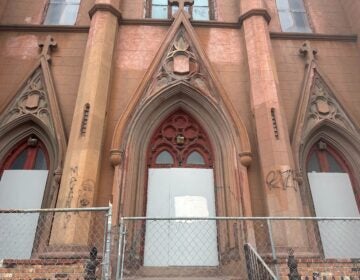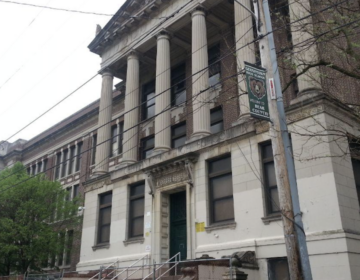Yorktown Master Plan calls for community preservation, revitalized green space and spruced-up gateways
A master plan to maintain and improve Yorktown – a small neighborhood near Temple University – has been approved by the Philadelphia City Planning Commission.
Yorktown is “One of the most successful examples of urban renewal in our city,” Neighborhood Planner David Fecteau told the commission.
The planning area stretches from Girard Avenue to Cecil B. Moore, and from 10th to Broad Street. In the late 1950s, blocks were cleared and houses built. It was, and remains, a community of largely African American homeowners, Fecteau said. “The point of the plan is to basically preserve and enhance what it is now.”
Fecteau hit some of the key points in the plan where city government can help Yorktown residents achieve their neighborhood goals. Yorktown is part of Edmund Bacon’s legacy, Fecteau said. “It is laid out with the same thought as Society Hill, where you have these public spaces that are city-owned rights of way used as community gathering spaces for residents to come together,” he said.
The community wants to protect the uniqueness of Yorktown, likely with a conservation overlay, Fecteau said, and it hopes to set up a local zoning hearing committee.
“Residents realize city government cannot take care of it all,” Fecteau said, but the hope is that the city will reaffirm that these gathering spaces are public rights of way that the city has some responsibility to maintain. Yorktown has been working with the non-profit Design Collaborative to envision what some of these areas could be, with a combination of public and private financing.
Some of the neighborhood’s gateway areas could use a little sprucing up. The stop signs are faded. There are blank walls where murals would look nice.
Most of the streets have held up well, but there are some rough patches that need work. And lighting upgrades are needed in some areas.
Yorktown would like some solar trash collectors and recylcing recepticals, Fecteau said. And the community wants more trees.
“The tree cover is about 9 percent, and that’s not a lot,” he said. “The goal, over the long term and in increments, is to plant 1,000 trees or so. Again with a combination of private and public resources.”
The neighborhood recreation centers mostly need routine maintenance. But because the community’s population is aging, the hope is to repace some of the ball fields and tennis courts with more passive recreation space.
The estimate is that for each of Yorktown’s six blocks, it would take between $300,000 and $500,000 to complete everything in the master plan. While the plan’s timeline stretches to 2015, the authors realize everything will not be done by then, Fecteau said.
“Part of the rich legacy of Yorktown residents is a vision for the future brightness and preservation of their community,” said Yorktown Community Development Corporation Executive Director Priscilla Woods.
Commission chairman and deputy mayor Alan Greenberger said he was pleased by the plan, which took a lot of effort on the part of the people in the neighborhood. He called Yorktown’s efforts over the years a “great story and example for the city.” He also said he appreciated the modest size of Yorktown’s requests from the city, considering these times of tight purse strings.
WHYY is your source for fact-based, in-depth journalism and information. As a nonprofit organization, we rely on financial support from readers like you. Please give today.





